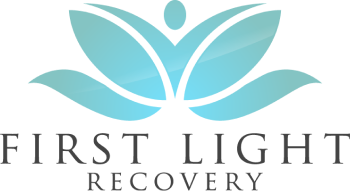Understanding Anxiety Disorders
Anxiety disorders represent a broad spectrum of conditions characterized by excessive fear, worry, and apprehension. A clear understanding of these disorders is essential for recognizing symptoms and seeking appropriate treatment.
Types of Anxiety Disorders
Various types of anxiety disorders exist, each with its own unique traits. Below are some common types:
| Anxiety Disorder | Description |
|---|---|
| Generalized Anxiety Disorder (GAD) | Excessive, ongoing worry about multiple topics, leading to physical symptoms, such as fatigue and irritability (Mayo Clinic). |
| Panic Disorder | Characterized by recurrent panic attacks, which are sudden periods of intense fear that may include heart palpitations and shortness of breath. |
| Social Anxiety Disorder | Extreme anxiety in social settings, often leading to avoidance of social interactions for fear of ridicule or embarrassment (Social Anxiety Institute). |
| Specific Phobias | Intense fear of a specific object or situation, which can significantly impair daily functioning. |
| Obsessive-Compulsive Disorder (OCD) | Involves unwanted thoughts (obsessions) that lead to repetitive behaviors or mental acts (compulsions) to relieve anxiety (Mayo Clinic). |
Psychological Symptoms
Understanding the psychological symptoms of anxiety disorders is crucial. The symptoms can vary widely, but common experiences include:
- Excessive worrying about various aspects of life
- Feelings of impending doom or panic attacks
- Avoidance of particular situations or places due to anxiety
- Difficulty concentrating and restlessness
- Intrusive thoughts that disrupt daily activities, particularly in the case of OCD
By recognizing these symptoms, we can better assess the impact anxiety can have on our lives. It is essential to seek help when these feelings become overwhelming. For support, consider exploring treatment options specific to conditions like navigating life with obsessive-compulsive disorder: treatment options and support or managing social anxiety through effective coping strategies for managing social anxiety in daily life.
As we deepen our understanding of the spectrum of anxiety disorders—from generalized anxiety to OCD—we equip ourselves to support ourselves and our loved ones more effectively.
Prevalence and Impact
Statistics and Data
Understanding the spectrum of anxiety disorders, from generalized anxiety to OCD, is crucial for recognizing how these conditions affect individuals and communities. Anxiety disorders are among the most prevalent mental health conditions, impacting people of all ages, including children, adolescents, and adults. According to studies, women are approximately twice as likely as men to experience an anxiety disorder (Cleveland Clinic).
Here are some relevant statistics that highlight the prevalence of anxiety disorders:
| Disorder Type | Prevalence Rate | Population Affected |
|---|---|---|
| Generalized Anxiety Disorder (GAD) | ~3% of adults | Approximately 6% lifetime prevalence in severe cases among youth |
| Anxiety Disorders (General) | Common, exact % unknown | Affects children, adolescents, and adults |
| Co-occurrence with Depression | High (varies by disorder) | Common among anxiety disorder sufferers |
The prevalence of Generalized Anxiety Disorder (GAD) affects about 3% of the adult population, and it is estimated that 1 in 4 children between the ages of 13 and 18 experiences this disorder at some point (Cleveland Clinic). Given these statistics, it becomes evident that anxiety disorders are a significant public health concern.
Complications of Untreated Anxiety
Left untreated, anxiety disorders can lead to serious complications, which may include an increased risk for various health issues. The repercussions can significantly diminish one’s quality of life, affecting relationships, work performance, and mental well-being (Cleveland Clinic).
Some common complications associated with untreated anxiety disorders are listed below:
| Complication | Description |
|---|---|
| Substance Misuse | Potential reliance on alcohol or drugs for relief |
| Physical Health Issues | Increased risk of cardiac events like heart attacks |
| Digestive Disorders | Bowel issues or digestive problems |
| Chronic Pain | Ongoing discomfort that can develop from anxiety |
| Sleep Disorders | Difficulty sleeping, leading to exhaustion |
| Co-occurring Mental Health Issues | Possible development of depression or other disorders |
For example, generalized anxiety disorder can lead to complications like chronic pain, digestive issues, and sleep disturbances. Early intervention is key to preventing these serious complications. Seeking treatment through effective coping strategies, such as therapy or medication, can help mitigate the risks involved with anxiety disorders.
Our goal at First Light Recovery is to offer the necessary support and treatment options to manage anxiety effectively. Whether you are exploring different therapeutic approaches, or seeking tailored care for yourself or a loved one, we are here to assist in navigating the complexities of anxiety disorders and their impacts.
Specific Anxiety Disorders
Anxiety disorders can manifest in various forms, with each type bringing its own unique challenges and experiences. Here, we will focus on two specific anxiety disorders: panic disorder and social anxiety disorder. Understanding these conditions is vital for those seeking mental health support, including services we offer at First Light Recovery.
Panic Disorder
Panic disorder is defined by unexpected panic attacks, which are sudden episodes of intense fear or discomfort. Individuals may become increasingly worried about experiencing more attacks after their first episode. The prevalence of panic disorder in the United States is about 3%. Those affected often struggle with the fear that their panic attacks may indicate serious physical health issues, such as a heart attack or suffocation. This misunderstanding can lead them to frequently seek medical reassurance.
| Key Characteristics | Details |
|---|---|
| Prevalence | Approximately 3% in the U.S. |
| Symptoms | Unexpected panic attacks, fear of future attacks |
| Comorbidity | Often occurs alongside other psychiatric conditions |
| Treatment | Medication and/or cognitive-behavioral therapy for long-term management |
Learning about the link between panic disorder and physical health: what you need to know helps individuals understand their condition better. At First Light Recovery, we provide tailored approaches to assist individuals in managing panic disorder effectively.
Social Anxiety Disorder
Social anxiety disorder involves a profound fear of social situations where individuals worry about being judged, embarrassed, or ridiculed. This disorder is the most prevalent anxiety disorder, with a prevalence rate of approximately 13%. The fear of being the center of attention can lead individuals to avoid social interactions entirely, which often compounds their anxiety. Many people with social anxiety find it challenging to seek therapy, particularly due to the anxiety related to interacting with authority figures in one-on-one scenarios (Social Anxiety Institute).
| Key Characteristics | Details |
|---|---|
| Prevalence | Approximately 13% in the U.S. |
| Symptoms | Extreme anxiety in social situations, fear of ridicule |
| Comorbidity | Often occurs alongside other psychiatric conditions |
| Treatment | Medication and/or cognitive-behavioral therapy for long-term management |
For those looking for effective strategies, we also offer insights into effective coping strategies for managing social anxiety in daily life. At First Light Recovery, we emphasize the importance of understanding these specific anxiety disorders as part of the broader scope of mental health care. We are here to help guide you or your loved ones through the complexities of anxiety-related conditions.
OCD: Obsessive-Compulsive Disorder
Symptoms and Effects
Obsessive-Compulsive Disorder (OCD) is characterized by a pattern of unwanted thoughts and fears, known as obsessions. These obsessions lead to compulsions—repetitive behaviors that interfere with daily activities and cause significant distress. According to the Mayo Clinic, common symptoms include:
- Persistent unwanted thoughts (obsessions)
- Intrusive urges that cause distress
- Repetitive behaviors or mental acts (compulsions) performed to reduce anxiety related to obsessions
Individuals with OCD often find that their compulsive behaviors provide only temporary relief from anxiety, leading to a cycle of obsessing and compulsively acting out. This disorder typically starts during the teen years or early adulthood and can vary in severity throughout life. Stress factors may exacerbate symptoms, significantly impacting daily living and overall quality of life, as highlighted by the National Institute of Mental Health (NIMH).
Here’s a table summarizing typical obsessions and compulsions experienced by individuals with OCD:
| Obsessions | Compulsions |
|---|---|
| Fear of contamination | Excessive cleaning |
| Fear of harming oneself or others | Checking locks or appliances |
| Need for symmetry | Arranging items repeatedly |
| Intrusive, violent thoughts | Counting or repeating actions |
Treatment Options
While there is currently no cure for OCD, various treatment options are available to help manage symptoms and improve quality of life. According to the NIMH, effective treatment strategies typically include:
- Psychotherapy:
- Cognitive Behavioral Therapy (CBT) is the most effective form of therapy for OCD. It focuses on changing the negative thought patterns associated with obsessions and helps individuals confront and reduce their compulsive behaviors.
- Medication:
- Selective Serotonin Reuptake Inhibitors (SSRIs) are commonly prescribed to alleviate symptoms. Medications may be combined with therapy for improved results.
- Brain Stimulation Techniques:
- For those with treatment-resistant OCD, research is ongoing into brain stimulation techniques such as Transcranial Magnetic Stimulation (TMS).
- Support Groups:
- Joining support groups can provide individuals with a sense of community, allowing them to share experiences and coping strategies.
Individuals experiencing symptoms of OCD are encouraged to seek professional help. For a better understanding of support systems, we recommend exploring our resources on navigating life with obsessive-compulsive disorder: treatment options and support. At First Light Recovery, we are dedicated to providing compassionate and comprehensive mental health services to those in need.
Seeking Help and Treatment
Therapeutic Approaches
Understanding the spectrum of anxiety disorders: from generalized anxiety to OCD requires knowledge of the various therapeutic approaches available. We recognize the importance of tailored treatment plans that address individual needs, incorporating both psychotherapy and medication as primary methods for managing anxiety disorders.
Psychotherapy, particularly Cognitive Behavioral Therapy (CBT), has proven to be the most effective form of therapy. CBT focuses on teaching specific skills to improve symptoms and helps individuals gradually return to activities they may have avoided because of anxiety (Mayo Clinic). Other therapeutic modalities may also be beneficial, such as:
| Therapy Type | Description |
|---|---|
| Exposure Therapy | Gradually exposes individuals to feared situations in a controlled manner. |
| Acceptance and Commitment Therapy (ACT) | Focuses on accepting thoughts rather than fighting them and committing to personal values. |
| Mindfulness-Based Therapy | Incorporates mindfulness practices to help reduce anxiety symptoms. |
Additionally, medications such as SSRIs and benzodiazepines may be prescribed to help manage symptoms. It is essential for individuals to work closely with healthcare providers to determine the best course of treatment based on their specific anxiety disorder and personal circumstances.
Importance of Timely Intervention
Timely intervention is crucial for effectively managing anxiety disorders. Early treatment can prevent complications and improve long-term outcomes. For instance, untreated anxiety may lead to substance misuse, sleep disturbances, and chronic pain (Mayo Clinic).
Research shows that the prevalence of panic disorder is around 3%, while social anxiety disorder affects about 13% of the population, with women experiencing these conditions at higher rates (PubMed). By seeking help as soon as symptoms arise, individuals can benefit from effective strategies early on, mitigating the impact on their daily lives.
At First Light Recovery, we emphasize the importance of building a support system, which can be pivotal in the healing process. Ongoing support from friends and family can enhance the effectiveness of therapeutic approaches and medication. If you or a loved one is struggling with anxiety, we encourage exploring our services and support options. We are committed to providing tailored care designed to restore well-being and promote healthy coping strategies for managing anxiety.




